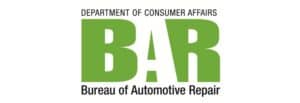States have introduced bills aimed at the adoption of California’s Advanced Clean Car Program zero-emission vehicle (ZEV) standards; California signals it is committed to reaching a ZEV standard of 100 percent by 2035
Sacramento, Calif.—Across state capitols, the 2021 legislative session has seen the introduction of numerous pieces of legislation related to electric vehicles (EVs). While a significant number of these bills deal with the advancement of electric vehicle studies, rebates and charging infrastructure, a handful of states have introduced bills aimed at the adoption of California’s Advanced Clean Car Program zero-emission vehicle (ZEV) standards.
The California ZEV standard requires automakers to deliver increasing percentages of ZEV vehicles, and California has signaled that it is committed to reaching a ZEV standard of 100 percent by 2035.
In the New York State Assembly, S4097 and S2735 were recently introduced. S4097 directs the promulgation of regulations establishing targets for the sales of zero-emission medium- and heavy-duty vehicles. S2735 aims to require that 100 percent of in-state sales of passenger vehicles are required to be ZEV by 2036. In Maryland, HB0592 seeks, beginning in fiscal year 2023, to prohibit state agencies from entering into a contract for a vehicle that is not a ZEV.
Both New York and Maryland, similar to California, have already put in place investments to help further the deployment of ZEV programs. These investments include incentives such as the New York Drive Clean program that provides up to $2,000 in rebates for the purchase of an EV, and Maryland’s Excise Tax Credit program that provides a tax credit of up to $3,000. Maryland’s program has been so popular that it has already run out of funding and now requires buyers to get on a waiting list.
States that pass ZEV standards without customer-focused incentives could find themselves with more cars than buyers.
In Virginia, HB1965 has passed both the Senate and House and is now awaiting action by the Governor. The legislation requires the adoption of the California Advanced Clean Car Program by directing the Virginia Air Board to promulgate regulations for a ZEV and Low Emission Vehicle (LEV) program for motor vehicles beginning with the 2025 model year.
While the Virginia legislation establishes a ZEV target that can be met with either the sales of EVs or a one-time deposit of proportional credits equal to the automaker’s 2025-model year California credit balance, the legislation does not include any of the investments and incentives needed to entice consumers to make the switch to EVs.
For example, state agencies in California have committed $2.46 billion in public funds to incentivize consumers to buy EVs. These initiatives include funds for the installation of approximately 32,000 public EV chargers, as well as a $2,500 EV point-of-sale rebate that can be coupled with the existing federal rebate. Additionally, California Governor Newsom recently announced a proposal to include $1.5 billion in the 2021 state budget that is to be used in part to further help consumers purchase electric vehicles.
In comparison, Virginia has approximately 2,100 public chargers currently existing throughout the entire state, and while a rebate bill was introduced and passed the 2021 session (HB1979), the legislature chose not to appropriate any funding for the rebate, despite a 2020 report by the Virginia Department of Mines Minerals and Energy that recommended a $40 million investment in rebates.
Virginia’s decision to impose the California ZEV standard before putting in place incentives and infrastructure support means that Virginia and automakers may not reach Virginia’s ZEV mandates. To do so would require at least $720 million in infrastructure and incentive investments if the state wants to align itself with the California EV market on a proportional basis. Considering that less than 2 percent of Virginians currently own an electric vehicle, this will require a significant shift on the part of Virginia’s consumers.
For a state that has very little infrastructure and few incentives in place, there is some risk that the Virginia market will not be ready to absorb the increased numbers of EVs that automakers will be required to deliver as part of the California standard. This could lead to a glut of vehicles on dealer lots or force the industry to sell these cars at a loss in order to meet the required delivery percentages.





Comments are closed.